#Autonomous Vehicle Control System
Explore tagged Tumblr posts
Text
Revolutionizing Mobility: The Power of Autonomous Vehicle Control Systems
Introduction
The rapid evolution of autonomous technology is reshaping the future of mobility. As industries shift toward automation, Autonomous Vehicle Control Systems (AVCS) are becoming a cornerstone for enhancing efficiency, safety, and precision in transportation. These systems play a pivotal role in enabling self-driving vehicles to navigate roads, execute real-time decisions, and operate seamlessly in dynamic environments. Servotech Inc. stands at the forefront of this transformation, offering cutting-edge solutions in AVCS to power the next generation of autonomous mobility.
What is an Autonomous Vehicle Control System?
An Autonomous Vehicle Control System is an integrated framework of hardware and software that governs a self-driving vehicle’s movement, navigation, and decision-making processes. This system incorporates Artificial Intelligence (AI), Machine Learning (ML), LiDAR, RADAR, GPS, and advanced sensor technologies to facilitate autonomous driving. By processing real-time data from various sensors, AVCS ensures optimal vehicle performance while maintaining safety and compliance with traffic regulations.
Key Components of AVCS
Perception System
Utilizes cameras, LiDAR, RADAR, and ultrasonic sensors to perceive the vehicle’s surroundings.
Detects obstacles, pedestrians, and road signs.
Creates a high-definition map for navigation.
2. Decision-Making System
Processes incoming data to assess traffic conditions and potential hazards.
Employs AI algorithms to make real-time driving decisions.
Prioritizes safety while optimizing speed and efficiency.
3. Navigation and Path Planning
Uses GPS, inertial navigation systems (INS), and high-resolution maps for accurate positioning.
Plans optimal routes while considering traffic, weather, and road conditions.
Adapts dynamically to unforeseen obstacles.
4. Control and Actuation
Regulates vehicle functions such as steering, acceleration, and braking.
Converts digital commands into mechanical actions.
Ensures smooth and precise vehicle movement.
Benefits of Autonomous Vehicle Control Systems
1. Enhanced Safety
AVCS reduces human error, which accounts for nearly 94% of traffic accidents. Advanced sensors and AI-driven decision-making minimize collision risks and enhance road safety.
2. Increased Efficiency
Autonomous systems optimize traffic flow, reduce congestion, and improve fuel efficiency by eliminating unnecessary stops and sudden braking.
3. Cost Savings
Companies and fleet operators can benefit from reduced labor costs and lower accident-related expenses, making autonomous transport more economically viable.
4. Accessibility and Convenience
AVCS can empower people with disabilities, providing them with greater mobility and independence. It also enhances convenience for passengers and freight transportation.
Applications of AVCS in Various Industries
Automotive Industry — Self-driving cars equipped with AVCS are being developed by industry leaders to revolutionize personal transportation.
Logistics and Freight — Autonomous trucks improve delivery efficiency, reduce costs, and streamline supply chain operations.
Public Transport — Autonomous buses and shuttles are being deployed in smart cities to provide efficient and safe mobility.
Industrial and Agricultural Automation — Self-driving machinery in manufacturing plants and farms enhances productivity and precision.
The Future of Autonomous Vehicle Control Systems
With continuous advancements in AI, 5G connectivity, and cloud computing, AVCS will continue to evolve. The integration of Vehicle-to-Everything (V2X) communication will further enhance real-time decision-making and safety. Companies like Servotech Inc. are pioneering innovative solutions that will define the future of self-driving technology.
Conclusion
Autonomous Vehicle Control Systems are transforming the landscape of mobility, offering safer, smarter, and more efficient transportation solutions. With companies like Servotech Inc. leading the charge, the future of autonomous driving is bright. As technology continues to advance, AVCS will drive us toward a world where self-driving vehicles are the norm, revolutionizing industries and everyday commuting.
To learn more about Servotech Inc.’s Autonomous Vehicle Control System, visit Servotech Inc.
0 notes
Text
Smart Traction: Intelligent All-Wheel Drive Market Accelerates to $49.3 Billion by 2030
The intelligent all-wheel drive market is experiencing remarkable momentum as automotive manufacturers integrate advanced electronics and artificial intelligence into drivetrain systems to deliver superior performance, safety, and efficiency. With an estimated revenue of $29.9 billion in 2024, the market is projected to grow at an impressive compound annual growth rate (CAGR) of 8.7% from 2024 to 2030, reaching $49.3 billion by the end of the forecast period. This robust growth reflects the automotive industry's evolution toward smarter, more responsive drivetrain technologies that adapt dynamically to changing road conditions and driving scenarios.

Evolution Beyond Traditional All-Wheel Drive
Intelligent all-wheel drive systems represent a significant advancement over conventional mechanical AWD configurations, incorporating sophisticated electronic controls, multiple sensors, and predictive algorithms to optimize traction and handling in real-time. These systems continuously monitor wheel slip, steering input, throttle position, and road conditions to make instantaneous adjustments to torque distribution between front and rear axles, and increasingly between individual wheels.
Unlike traditional AWD systems that react to wheel slip after it occurs, intelligent systems use predictive algorithms and sensor data to anticipate traction needs before wheel slip begins. This proactive approach enhances vehicle stability, improves fuel efficiency, and provides superior performance across diverse driving conditions from highway cruising to off-road adventures.
Consumer Demand for Enhanced Safety and Performance
Growing consumer awareness of vehicle safety and performance capabilities is driving increased demand for intelligent AWD systems. Modern drivers expect vehicles that can confidently handle adverse weather conditions, challenging terrain, and emergency maneuvering situations. Intelligent AWD systems provide these capabilities while maintaining the fuel efficiency advantages of front-wheel drive during normal driving conditions.
The rise of active lifestyle trends and outdoor recreation activities has increased consumer interest in vehicles capable of handling diverse terrain and weather conditions. Intelligent AWD systems enable crossovers and SUVs to deliver genuine all-terrain capability without compromising on-road refinement and efficiency.
SUV and Crossover Market Expansion
The global shift toward SUVs and crossover vehicles is a primary driver of intelligent AWD market growth. These vehicle segments increasingly offer AWD as standard equipment or popular options, with intelligent systems becoming key differentiators in competitive markets. Manufacturers are positioning advanced AWD capabilities as premium features that justify higher trim levels and increased profitability.
Luxury vehicle segments are particularly driving innovation in intelligent AWD technology, with features such as individual wheel torque vectoring, terrain-specific driving modes, and integration with adaptive suspension systems. These advanced capabilities create compelling value propositions for consumers seeking both performance and versatility.
Electric Vehicle Integration Opportunities
The electrification of automotive powertrains presents unique opportunities for intelligent AWD systems. Electric vehicles can implement AWD through individual wheel motors or dual-motor configurations that provide precise torque control impossible with mechanical systems. Electric AWD systems offer instant torque delivery, regenerative braking coordination, and energy management optimization.
Hybrid vehicles benefit from intelligent AWD systems that coordinate internal combustion engines with electric motors to optimize performance and efficiency. These systems can operate in electric-only AWD mode for quiet, emissions-free driving or combine power sources for maximum performance when needed.
Advanced Sensor Technology and Data Processing
Modern intelligent AWD systems incorporate multiple sensor technologies including accelerometers, gyroscopes, wheel speed sensors, and increasingly, cameras and radar systems that monitor road conditions ahead of the vehicle. Machine learning algorithms process this sensor data to predict optimal torque distribution strategies for varying conditions.
GPS integration enables intelligent AWD systems to prepare for upcoming terrain changes, weather conditions, and road characteristics based on location data and real-time traffic information. This predictive capability allows systems to optimize performance before challenging conditions are encountered.
Manufacturer Competition and Innovation
Intense competition among automotive manufacturers is driving rapid innovation in intelligent AWD technology. Brands are developing proprietary systems with unique characteristics and branding to differentiate their vehicles in crowded markets. This competition accelerates technological advancement while providing consumers with increasingly sophisticated options.
Partnerships between automotive manufacturers and technology companies are creating new capabilities in intelligent AWD control systems. Artificial intelligence, cloud computing, and advanced materials are being integrated to create more responsive and efficient systems.
Regional Market Dynamics
Different global markets exhibit varying demand patterns for intelligent AWD systems based on climate conditions, terrain characteristics, and consumer preferences. Northern markets with harsh winter conditions show strong demand for advanced traction systems, while emerging markets focus on systems that provide value-oriented performance improvements.
Regulatory requirements for vehicle stability and safety systems in various regions influence the adoption of intelligent AWD technology. Standards for electronic stability control and traction management create baseline requirements that intelligent AWD systems can exceed.
Manufacturing and Cost Considerations
The increasing sophistication of intelligent AWD systems requires significant investment in research and development, manufacturing capabilities, and supplier relationships. However, economies of scale and advancing semiconductor technology are helping to reduce system costs while improving performance and reliability.
Modular system designs enable manufacturers to offer different levels of AWD sophistication across vehicle lineups, from basic intelligent systems in entry-level models to advanced torque-vectoring systems in performance vehicles.
#intelligent all-wheel drive#smart AWD systems#advanced traction control#automotive drivetrain technology#AWD market growth#intelligent torque distribution#electronic stability control#vehicle dynamics systems#all-terrain vehicle technology#automotive safety systems#performance AWD#electric vehicle AWD#hybrid drivetrain systems#torque vectoring technology#predictive AWD control#adaptive traction systems#automotive electronics#drivetrain electrification#active differential systems#terrain management systems#AWD coupling technology#automotive sensors#machine learning automotive#AI-powered drivetrain#connected vehicle systems#autonomous driving technology#SUV market growth#crossover vehicle technology#premium automotive features#automotive innovation trends
0 notes
Text
How Automotive Cameras Are Shaping the Future of Autonomous Vehicles
The global automotive camera market size is projected to grow from USD 8.33 Billion in 2024 to USD 16.04 Billion by 2030, at a CAGR of 11.5%. Government regulations regarding vehicle occupants and pedestrian safety is driving the growth of the automotive camera market on a global scale. The GSR2 regulations in Europe, effective June 2024, mandate driver monitoring systems (DMS) in all new…
#Adaptive Cruise Control#adas#Advanced Driver Assistance Systems#Automotive Cameras#Automotive Technology#autonomous vehicles#Blind Spot Detection#Connected Cars#Digital Cameras#Driver Monitoring System#Front View Camera#Infrared Cameras#Night Vision System#Parking Assistance#Rear View Camera#Side View Camera#Smart Vehicles#Surround View#Thermal Cameras#Vehicle Safety
0 notes
Text
Electric Propulsion Solutions for Uncrewed Ground Vehicles (UGVs)
ePropelled offers energy-efficient motors and controllers for uncrewed ground vehicles (UGVs), providing powerful, reliable, and intelligent propulsion for defense, commercial, and agricultural applications.
#Uncrewed Ground Vehicles#UGV propulsion motors#UGV#Rhino propulsion motors#Rhino motor controllers#UGV motor controllers#UGV propulsion solutions#ePropelled#ePropelled Motors#ePropelled Solutions#ePropelled Systems#ePropelled Motor Controllers#ePropelled brushless electric motors#Brushless motors#Electric motors for autonomous vehicle
0 notes
Text
BYD eMAX 7: Performance and Features Review
₹29.3 Lakh Powertrain and Performance Motor and Power Powered by an AC Permanent Magnet Synchronous Motor, the eMAX 7 delivers 201.15 bhp and 310 Nm of torque. The motor ensures smooth acceleration, with 0–100 km/h achieved in just 8.6 seconds, making it competitive within the premium electric MUV segment. The Front Wheel Drive (FWD) configuration focuses on optimizing efficiency while…
#6-Seater MUV#AC Motor#Adaptive cruise control#ADAS#Advanced Driver Assistance Systems#automatic climate control#Autonomous Emergency Braking#Battery Range#BYD#BYD Warranty.#DC Fast Charging#Electric MUV#Electric SUV#EV#Family Car#FWD#Hill start assist#Intelligent Touch Screen#LED Headlamps#Long Range EV#Luxury interior#Panoramic Sunroof#Performance#Premium Electric Vehicle#regenerative braking#safety features#Superior 6 Str#Sustainable Mobility#Tags: BYD eMAX 7#Urban Commute
0 notes
Link
Entregamos histórias. Também fornecemos guias, dicas e truques sobre como criar o seu próprio.Este canal é dedicado a coisas aleatórias que surgem em nossas ...
#$1.5 million penalty#cruise's autonomous vehicle division#hefty fine#reporting crash#pedestrian#san francisco#nationwide suspension#driverless operations#california#public safety threat#950 vehicles#software update#regain control#ensure safety#nhtsa#corrective action plan#regulations#automated driving systems#quarterly meetings#detailed reports.
0 notes
Text
Blog Post: Celebrating International Traffic Light Day: A Symbol of Safety and Order on the Roads
International Traffic Light Day celebrates the vital role traffic lights play in road safety and efficiency. From their history to modern innovations, discover how these signals keep our roads safe.
Every year on August 5th, we celebrate International Traffic Light Day, a day dedicated to honoring one of the most essential inventions in modern society—the traffic light. While it may seem like a mundane aspect of daily life, the traffic light plays a crucial role in maintaining order and safety on our roads, helping to prevent accidents and ensuring the smooth flow of traffic. On this day, we…
#Autonomous Vehicles#International Traffic Light Day#LED Traffic Lights#Road Safety#Smart Traffic Systems#Sustainability#Traffic Control#Traffic Lights History#Transportation Technology#Urban Planning
0 notes
Text
Janabel Xia: Algorithms, dance rhythms, and the drive to succeed
New Post has been published on https://thedigitalinsider.com/janabel-xia-algorithms-dance-rhythms-and-the-drive-to-succeed/
Janabel Xia: Algorithms, dance rhythms, and the drive to succeed


Senior math major Janabel Xia is a study of a person in constant motion.
When she isn’t sorting algorithms and improving traffic control systems for driverless vehicles, she’s dancing as a member of at least four dance clubs. She’s joined several social justice organizations, worked on cryptography and web authentication technology, and created a polling app that allows users to vote anonymously.
In her final semester, she’s putting the pedal to the metal, with a green light to lessen the carbon footprint of urban transportation by using sensors at traffic light intersections.
First steps
Growing up in Lexington, Massachusetts, Janabel has been competing on math teams since elementary school. On her math team, which met early mornings before the start of school, she discovered a love of problem-solving that challenged her more than her classroom “plug-and-chug exercises.”
At Lexington High School, she was math team captain, a two-time Math Olympiad attendee, and a silver medalist for Team USA at the European Girls’ Mathematical Olympiad.
As a math major, she studies combinatorics and theoretical computer science, including theoretical and applied cryptography. In her sophomore year, she was a researcher in the Cryptography and Information Security Group at the MIT Computer Science and Artificial Intelligence Laboratory, where she conducted cryptanalysis research under Professor Vinod Vaikuntanathan.
Part of her interests in cryptography stem from the beauty of the underlying mathematics itself — the field feels like clever engineering with mathematical tools. But another part of her interest in cryptography stems from its political dimensions, including its potential to fundamentally change existing power structures and governance. Xia and students at the University of California at Berkeley and Stanford University created zkPoll, a private polling app written with the Circom programming language, that allows users to create polls for specific sets of people, while generating a zero-knowledge proof that keeps personal information hidden to decrease negative voting influences from public perception.
Her participation in the PKG Center’s Active Community Engagement Freshman Pre-Orientation Program introduced her to local community organizations focusing on food security, housing for formerly incarcerated individuals, and access to health care. She is also part of Reading for Revolution, a student book club that discusses race, class, and working-class movements within MIT and the Greater Boston area.
Xia’s educational journey led to her ongoing pursuit of combining mathematical and computational methods in areas adjacent to urban planning. “When I realized how much planning was concerned with social justice as it was concerned with design, I became more attracted to the field.”
Going on autopilot
She took classes with the Department of Urban Studies and Planning and is currently working on an Undergraduate Research Opportunities Program (UROP) project with Professor Cathy Wu in the Institute for Data, Systems, and Society.
Recent work on eco-driving by Wu and doctoral student Vindula Jayawardana investigated semi-autonomous vehicles that communicate with sensors localized at traffic intersections, which in theory could reduce carbon emissions by up to 21 percent.
Xia aims to optimize the implementation scheme for these sensors at traffic intersections, considering a graded scheme where perhaps only 20 percent of all sensors are initially installed, and more sensors get added in waves. She wants to maximize the emission reduction rates at each step of the process, as well as ensure there is no unnecessary installation and de-installation of such sensors.
Dance numbers
Meanwhile, Xia has been a member of MIT’s Fixation, Ridonkulous, and MissBehavior groups, and as a traditional Chinese dance choreographer for the MIT Asian Dance Team.
A dancer since she was 3, Xia started with Chinese traditional dance, and later added ballet and jazz. Because she is as much of a dancer as a researcher, she has figured out how to make her schedule work.
“Production weeks are always madness, with dancers running straight from class to dress rehearsals and shows all evening and coming back early next morning to take down lights and roll up marley [material that covers the stage floor],” she says. “As busy as it keeps me, I couldn’t have survived MIT without dance. I love the discipline, creativity, and most importantly the teamwork that dance demands of us. I really love the dance community here with my whole heart. These friends have inspired me and given me the love to power me through MIT.”
Xia lives with her fellow Dance Team members at the off-campus Women’s Independent Living Group (WILG). “I really value WILG’s culture of independence, both in lifestyle — cooking, cleaning up after yourself, managing house facilities, etc. — and thought — questioning norms, staying away from status games, finding new passions.”
In addition to her UROP, she’s wrapping up some graduation requirements, finishing up a research paper on sorting algorithms from her summer at the University of Minnesota Duluth Research Experience for Undergraduates in combinatorics, and deciding between PhD programs in math and computer science.
“My biggest goal right now is to figure out how to combine my interests in mathematics and urban studies, and more broadly connect technical perspectives with human-centered work in a way that feels right to me,” she says.
“Overall, MIT has given me so many avenues to explore that I would have never thought about before coming here, for which I’m infinitely grateful. Every time I find something new, it’s hard for me not to find it cool. There’s just so much out there to learn about. While it can feel overwhelming at times, I hope to continue that learning and exploration for the rest of my life.”
#Algorithms#app#artificial#Artificial Intelligence#Arts#authentication#autonomous vehicles#Beauty#book#carbon#carbon emissions#carbon footprint#change#classes#Community#computer#Computer Science#Computer Science and Artificial Intelligence Laboratory (CSAIL)#Computer science and technology#control systems#cooking#creativity#cryptography#dance#data#Design#dimensions#driving#Electrical Engineering&Computer Science (eecs)#Emissions
1 note
·
View note
Text
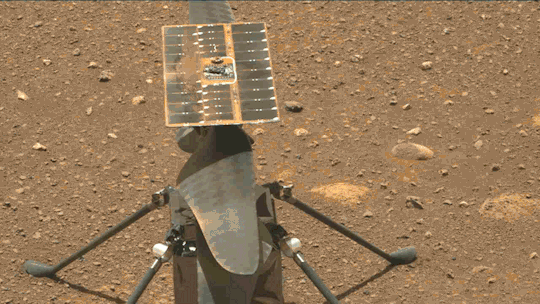
What We Learned from Flying a Helicopter on Mars

The Ingenuity Mars Helicopter made history – not only as the first aircraft to perform powered, controlled flight on another world – but also for exceeding expectations, pushing the limits, and setting the stage for future NASA aerial exploration of other worlds.
Built as a technology demonstration designed to perform up to five experimental test flights over 30 days, Ingenuity performed flight operations from the Martian surface for almost three years. The helicopter ended its mission on Jan. 25, 2024, after sustaining damage to its rotor blades during its 72nd flight.
So, what did we learn from this small but mighty helicopter?
We can fly rotorcraft in the thin atmosphere of other planets.
Ingenuity proved that powered, controlled flight is possible on other worlds when it took to the Martian skies for the first time on April 19, 2021.
Flying on planets like Mars is no easy feat: The Red Planet has a significantly lower gravity – one-third that of Earth’s – and an extremely thin atmosphere, with only 1% the pressure at the surface compared to our planet. This means there are relatively few air molecules with which Ingenuity’s two 4-foot-wide (1.2-meter-wide) rotor blades can interact to achieve flight.
Ingenuity performed several flights dedicated to understanding key aerodynamic effects and how they interact with the structure and control system of the helicopter, providing us with a treasure-trove of data on how aircraft fly in the Martian atmosphere.
Now, we can use this knowledge to directly improve performance and reduce risk on future planetary aerial vehicles.
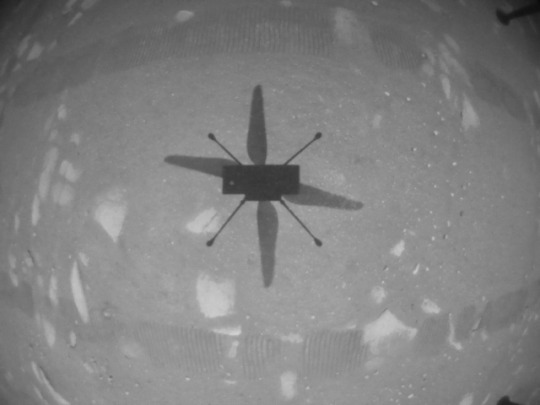
Creative solutions and “ingenuity” kept the helicopter flying longer than expected.
Over an extended mission that lasted for almost 1,000 Martian days (more than 33 times longer than originally planned), Ingenuity was upgraded with the ability to autonomously choose landing sites in treacherous terrain, dealt with a dead sensor, dusted itself off after dust storms, operated from 48 different airfields, performed three emergency landings, and survived a frigid Martian winter.
Fun fact: To keep costs low, the helicopter contained many off-the-shelf-commercial parts from the smartphone industry - parts that had never been tested in deep space. Those parts also surpassed expectations, proving durable throughout Ingenuity’s extended mission, and can inform future budget-conscious hardware solutions.

There is value in adding an aerial dimension to interplanetary surface missions.
Ingenuity traveled to Mars on the belly of the Perseverance rover, which served as the communications relay for Ingenuity and, therefore, was its constant companion. The helicopter also proved itself a helpful scout to the rover.
After its initial five flights in 2021, Ingenuity transitioned to an “operations demonstration,” serving as Perseverance’s eyes in the sky as it scouted science targets, potential rover routes, and inaccessible features, while also capturing stereo images for digital elevation maps.
Airborne assets like Ingenuity unlock a new dimension of exploration on Mars that we did not yet have – providing more pixels per meter of resolution for imaging than an orbiter and exploring locations a rover cannot reach.
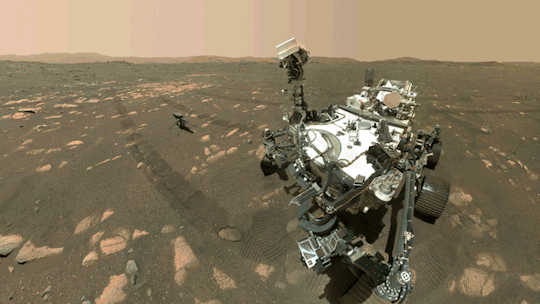
Tech demos can pay off big time.
Ingenuity was flown as a technology demonstration payload on the Mars 2020 mission, and was a high risk, high reward, low-cost endeavor that paid off big. The data collected by the helicopter will be analyzed for years to come and will benefit future Mars and other planetary missions.
Just as the Sojourner rover led to the MER-class (Spirit and Opportunity) rovers, and the MSL-class (Curiosity and Perseverance) rovers, the team believes Ingenuity’s success will lead to future fleets of aircraft at Mars.
In general, NASA’s Technology Demonstration Missions test and advance new technologies, and then transition those capabilities to NASA missions, industry, and other government agencies. Chosen technologies are thoroughly ground- and flight-tested in relevant operating environments — reducing risks to future flight missions, gaining operational heritage and continuing NASA’s long history as a technological leader.
youtube
You can fall in love with robots on another planet.
Following in the tracks of beloved Martian rovers, the Ingenuity Mars Helicopter built up a worldwide fanbase. The Ingenuity team and public awaited every single flight with anticipation, awe, humor, and hope.
Check out #ThanksIngenuity on social media to see what’s been said about the helicopter’s accomplishments.
youtube
Learn more about Ingenuity’s accomplishments here. And make sure to follow us on Tumblr for your regular dose of space!
5K notes
·
View notes
Text
Writing Reference: Fear
When you encounter a perceived threat, your brain thinks you are in danger and attempts to keep you safe through a fight-flight-freeze response. Sometimes, it is lifesaving; other times, it is incorrect or a poor match for the situation, for example:
Hearing a loud noise in the middle of the night
Jumping out of the way of a speeding vehicle
Feeling scared when walking down a dark alley
Being asked to give an impromptu speech
The following psychological threat examples may not result from the object or event itself (e.g., public speaking, social situations, or spiders) but from being afraid of the experience of anxiety associated with it (McCabe & Milosevic, 2015):
Panic attacks. Panic attacks can be part of the fear response in anxiety disorders and are sometimes associated with anxiety over losing control, dying, or “going crazy.” They can occur in threat-free situations.
Anxiety sensitivity. The fear of fear can result from the belief that the sensations (e.g., racing heart, rapid breathing, and sweating) signal imminent physical, psychological, and social harm.
Agliophobia. Agliophobia is the fear of pain or suffering in the short or long term. This condition can lead to extreme reactions, such as escaping or avoiding situations with even the slightest chance of injury. It is less about the pain itself and more about its anticipation (for example, a fear of needles).
Social anxiety disorder. This involves the fear of being judged or evaluated in social or performance situations, such as during interviews or when presenting. The anxiety or avoidance behavior associated with this fear can significantly impair quality of life.
The event itself is less important than the individual’s perception, impacted by knowledge, experiences, and expectations.
When the hypothalamus sends its distress signal through the autonomic nerves to the adrenal glands, the hormone epinephrine (adrenaline) is pumped into the bloodstream, resulting in (Harvard Health Publishing, 2020; Nunez, 2020):
Heartbeat speeds up, pushing more blood and oxygen to the muscles and other vital organs. During a freeze response, heart rate may slow.
Pulse and blood pressure increase.
Breathing speeds up to get more oxygen into the blood. During a freeze response, breathing may be interrupted or restricted.
Small airways in the lungs open wide.
Increased oxygen to the brain leads to increased alertness and sharpened senses.
Pupils may dilate to let in additional light, and hearing improves.
More blood sugar (glucose) and fats are released into the bloodstream to supply extra energy.
Ongoing perception of threat leads to further release of adrenaline and cortisol.
Skin may get cold or sweat, as can hands and feet.
Pain perception may reduce.
Once the perceived threat is over, the parasympathetic system begins to dampen the stress response.
Source ⚜ More: Notes & References ⚜ Writing Resources PDFs
#fear#psychology#character development#writeblr#literature#writing reference#spilled ink#writers on tumblr#dark academia#writing prompt#creative writing#writing inspiration#light academia#lit#writing#writing resources
159 notes
·
View notes
Text
🚢 Tesla's Remote Control Patent: The Birth of Modern Automation 🚢

On November 8, 1898, Nikola Tesla was granted U.S. Patent No. 613,809 for his "Method of and Apparatus for Controlling Mechanism of Moving Vessels or Vehicles." This invention wasn’t just the first practical remote control—it marked a revolutionary step toward the development of wireless communication and automation.
🔧 How Tesla’s System Worked 🔧
Tesla's system worked much like how we control drones today—only over a century ago!
1️⃣ Transmitter: Tesla used radio waves to send wireless commands to the vessel.
2️⃣ Receiver: The vessel had a sensitive device that decoded the radio signals into specific actions, such as steering or powering motors.
3️⃣ Control Circuits: Tesla designed a series of circuits that ensured each command executed reliably, preventing errors and interference.

⚙️ Key Features ⚙️
💡 Command Logic: Tesla's circuits functioned like a primitive decision-making system, linking specific signals to specific actions—a conceptual precursor to today’s logic gates.
🔋 Multi-Channel Design: Each circuit operated on a unique frequency, akin to modern multi-device networks, ensuring precise control without interference.
🛡️ Safety First: Tesla implemented mechanisms to prevent accidental or incorrect activations, prioritizing reliability.

🌍 Applications Then and Now 🌍
Tesla saw the potential for:
✔️ Military Use: Guiding unmanned ships or torpedoes.
✔️ Disaster Response: Sending unmanned vessels into dangerous areas.
✔️ Remote Automation: Introducing wireless precision to various industries.
Today, Tesla's vision echoes in:
🚁 Drones: Controlled remotely through radio signals.
🤖 Robots: Autonomous machines performing tasks with precision.
🏠 Smart Homes: Devices responding to commands over Wi-Fi.
🏭 Automated Factories: Machines operating through programmable controls Tesla helped inspire.
🌟 Why Tesla’s Invention Matters 🌟
Tesla didn’t just create a remote control—he pioneered a framework for wireless systems that continues to shape modern technology. What are your thoughts on Tesla's advancement in wireless technology?
72 notes
·
View notes
Text
youtube
Meet MBARI: This team develops innovative new technology to map the seafloor 🤖🗺️
With marine life and ecosystems facing a rising tide of threats, the ocean exploration community needs nimble, cost-effective tools for measuring and monitoring ocean health. MBARI’s Control, Modeling, and Perception of Autonomous Systems Laboratory, known as the CoMPAS Lab is up to the challenge.
MBARI scientists and engineers build and adapt advanced technology that enhances ocean data collection. Led by engineer Giancarlo Troni, the CoMPAS Lab team develops scalable marine technology that can easily be modified for use in a wide variety of vehicles and platforms.

Working with other teams across MBARI, the CoMPAS Lab leverages vehicles like the MiniROV to deploy and test new tools in Monterey Bay's submarine canyon and then adapt them for other mobile platforms. By sharing open-source design specifications and advanced algorithms with the wider ocean exploration community, we hope to expand access to MBARI’s engineering innovations.
MBARI technology is transforming what we know about the ocean and its inhabitants. Our scientists, engineers, and marine operations staff work together to create innovative tools for a more sustainable future where autonomous robots and artificial intelligence can track ocean health in real time and help us visualize ocean animals and environments. Studying our blue backyard is revealing our connection to the ocean—how it sustains us and how our actions on land may be threatening its future.

We’re spotlighting various teams at MBARI to showcase the different ways we’re studying the largest environment on Earth. We hope this series inspires a new generation of ocean explorers. Dive in.
39 notes
·
View notes
Text
Elon Musk has pledged that the work of his so-called Department of Government Efficiency, or DOGE, would be “maximally transparent.” DOGE’s website is proof of that, the Tesla and SpaceX CEO, and now White House adviser, has repeatedly said. There, the group maintains a list of slashed grants and budgets, a running tally of its work.
But in recent weeks, The New York Times reported that DOGE has not only posted major mistakes to the website—crediting DOGE, for example, with saving $8 billion when the contract canceled was for $8 million and had already paid out $2.5 million—but also worked to obfuscate those mistakes after the fact, deleting identifying details about DOGE’s cuts from the website, and later even from its code, that made them easy for the public to verify and track.
For road-safety researchers who have been following Musk for years, the modus operandi feels familiar. DOGE “put out some numbers, they didn’t smell good, they switched things around,” alleges Noah Goodall, an independent transportation researcher. “That screamed Tesla. You get the feeling they’re not really interested in the truth.”
For nearly a decade, Goodall and others have been tracking Tesla’s public releases on its Autopilot and Full Self-Driving features, advanced driver-assistance systems designed to make driving less stressful and more safe. Over the years, researchers claim, Tesla has released safety statistics without proper context; promoted numbers that are impossible for outside experts to verify; touted favorable safety statistics that were later proved misleading; and even changed already-released safety statistics retroactively. The numbers have been so inconsistent that Tesla Full Self-Driving fans have taken to crowdsourcing performance data themselves.
Instead of public data releases, “what we have is these little snippets that, when researchers look into them in context, seem really suspicious,” alleges Bryant Walker Smith, a law professor and engineer who studies autonomous vehicles at the University of South Carolina.
Government-Aided Whoopsie
Tesla’s first and most public number mix-up came in 2018, when it released its first Autopilot safety figures after the first known death of a driver using Autopilot. Immediately, researchers noted that while the numbers seemed to show that drivers using Autopilot were much less likely to crash than other Americans on the road, the figures lacked critical context.
At the time, Autopilot combined adaptive cruise control, which maintains a set distance between the Tesla and the vehicle in front of it, and steering assistance, which keeps the car centered between lane markings. But the comparison didn’t control for type of car (luxury vehicles, the only kind Tesla made at the time, are less likely to crash than others), the person driving the car (Tesla owners were more likely to be affluent and older, and thus less likely to crash), or the types of roads where Teslas were driving (Autopilot operated only on divided highways, but crashes are more likely to occur on rural roads, and especially connector and local ones).
The confusion didn’t stop there. In response to the fatal Autopilot crash, Tesla did hand over some safety numbers to the National Highway Traffic Safety Administration, the nation’s road safety regulator. Using those figures, the NHTSA published a report indicating that Autopilot led to a 40 percent reduction in crashes. Tesla promoted the favorable statistic, even citing it when, in 2018, another person died while using Autopilot.
But by spring of 2018, the NHTSA had copped to the number being off. The agency did not wholly evaluate the effectiveness of the technology in comparison to Teslas not using the feature—using, for example, air bag deployment as an inexact proxy for crash rates. (The airbags did not deploy in the 2018 Autopilot death.)
Because Tesla does not release Autopilot or Full Self-Driving safety data to independent, third-party researchers, it’s difficult to tell exactly how safe the features are. (Independent crash tests by the NHTSA and other auto regulators have found that Tesla cars are very safe, but these don’t evaluate driver assistance tech.) Researchers contrast this approach with the self-driving vehicle developer Waymo, which often publishes peer-reviewed papers on its technology’s performance.
Still, the unknown safety numbers did not prevent Musk from criticizing anyone who questioned Autopilot’s safety record. “It's really incredibly irresponsible of any journalists with integrity to write an article that would lead people to believe that autonomy is less safe,” he said in 2018, around the time the NHTSA figure publicly fell apart. “Because people might actually turn it off, and then die.”
Number Questions
More recently, Tesla has continued to shift its Autopilot safety figures, leading to further questions about its methods. Without explanation, the automaker stopped putting out quarterly Autopilot safety reports in the fall of 2022. Then, in January 2023, it revised all of its safety numbers.
Tesla said it had belatedly discovered that it had erroneously included in its crash numbers events where no airbags nor active restraints were deployed and that it had found that some events were counted more than once. Now, instead of dividing its crash rates into three categories, "Autopilot engaged,” “without Autopilot but with our active safety features,” and “without Autopilot and without our active safety features,” it would report just two: with and without Autopilot. It applied those new categories, retroactively, to its old safety numbers and said it would use them going forward.
That discrepancy allowed Goodall, the researcher, to peer more closely into the specifics of Tesla’s crash reporting. He noticed something in the data. He expected the “without Autopilot” number to just be an average of the two old “without Auptilot” categories. It wasn’t. Instead, the new figure looked much more like the old “without Autopilot and without our active safety features” number. That’s weird, he thought. It’s not easy—or, according to studies that also include other car makes, common—for drivers to turn off all their active safety features, which include lane departure and forward collision warnings and automatic emergency braking.
Goodall calculated that even if Tesla drivers were going through the burdensome and complicated steps of turning off their EV’s safety features, they’d need to drive way more miles than other Tesla drivers to create a sensible baseline. The upshot: Goodall wonders if Tesla is allegedly making its non-Autopilot crash rate look higher than it is—and so the Autopilot crash rate allegedly looks much better by comparison.
The discrepancy is still puzzling to the researcher, who published a peer-reviewed note on the topic last summer. Tesla “put out this data that looks questionable on first glance—and then you look at it, and it is questionable,” he claims. “Instead of taking it down and acknowledging it, they change the numbers to something that is even weirder and flawed in a more complicated way. I feel like I’m doing their homework at this point.” The researcher calls for more transparency. So far, Tesla has not put out more specific safety figures.
Tesla, which disbanded its public relations team in 2021, did not reply to WIRED’s questions about the study or its other public safety data.
Direct Reports
Tesla is not a total outlier in the auto industry when it comes to clamming up about the performance of its advanced technology. Automakers are not required to make public many of their safety numbers. But where tech developers are required to submit public accounting on their crashes, Tesla is still less transparent than most. One prominent national data submission requirement, first instituted by the NHTSA in 2021, requires makers of both advanced driver assistance and automated driving tech to submit public data about its crashes. Tesla redacts nearly every detail about its Autopilot-related crashes in its public submissions.
“The specifics of all 2,819 crash reports have been redacted from publicly available data at Tesla's request,” says Philip Koopman, an engineering professor at Carnegie Mellon University whose research includes self-driving-car safety. “No other company is so blatantly opaque about their crash data.”
The federal government likely has access to details on these crashes, but the public doesn’t. But even that is at risk. Late last year, Reuters reported that the crash-reporting requirement appeared to be a focus of the Trump transition team.
In many ways, Tesla—and perhaps DOGE—is distinctive. “Tesla also uniquely engages with the public and is such a cause célèbre that they don’t have to do their own marketing. I think that also entails some special responsibility. Lots of claims are made on behalf of Tesla,” says Walker Smith, the law professor. “I think it engages selectively and opportunistically and does not correct sufficiently.”
Proponents of DOGE, like those of Tesla, engage enthusiastically on Musk’s platform, X, applauded by Musk himself. The two entities have at least one other thing in common: ProPublica recently reported that there is a new employee at the US Department of Transportation—a former Tesla senior counsel.
22 notes
·
View notes
Text
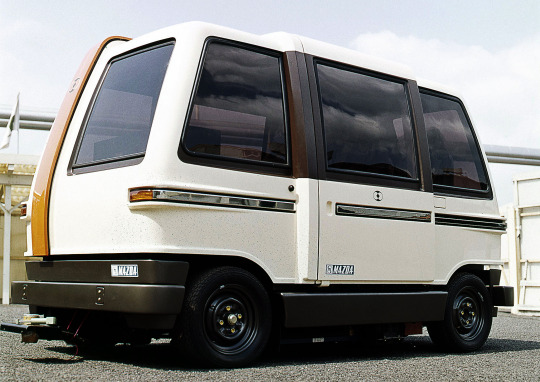
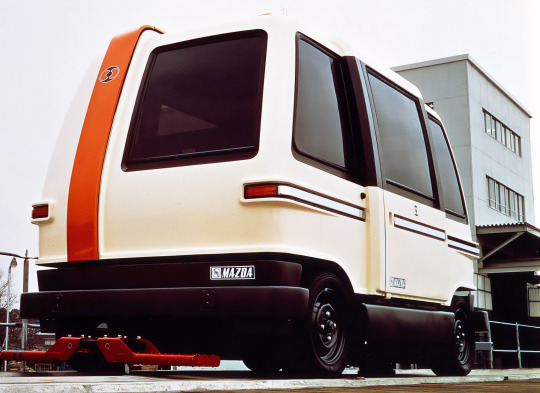

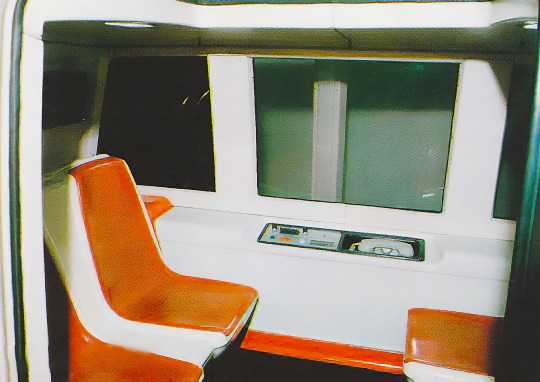

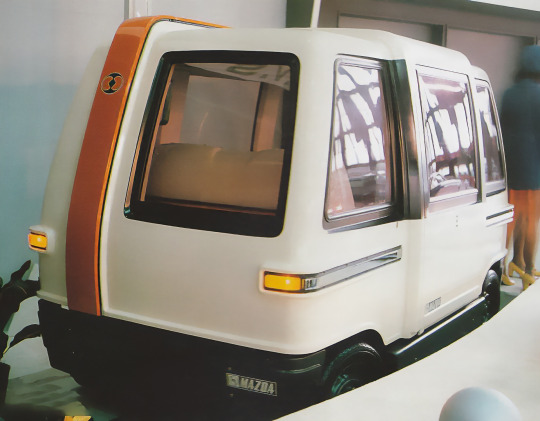
50 years on: Mazda CVS, 1973. Presented 50 years ago at the 20th Tokyo Motor Show in October 1973. A proposal for an autonomous Computer-controller Vehicle System, Mazda went so far as to build a test railway track for the CVS but it never went into production
#Mazda#Mazda CVS#50 years ago#20th Tokyo Motor Show#1973#50th anniversary#transport system#concept#autonomous#experimental vehicle#test vehicle
307 notes
·
View notes
Text
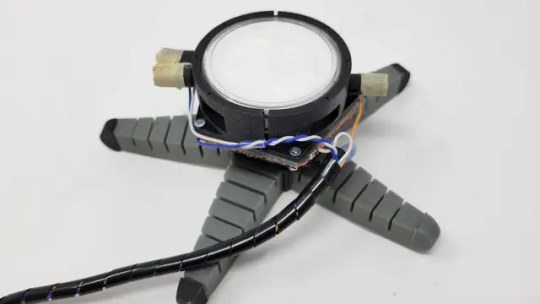
Greetings folks! Did somebody say fungus bots? its time to spore some trouble i guess :) ok it wasnt funny i get it.. Anyways meet with new fungus based biohybrid bot..
youtube
before i start to explain how its works lets take a look at its backstory shall we?
The idea was almost age old actually, experimentation of soft body robotics and bio robotics and today its reshape as we see biohybrid robotics with the search for more sustainable, self-healing, and biodegradable materials. Traditional robots are often made from synthetic materials and metals, which can be rigid, non-biodegradable, and challenging to repair. The researchers at Cornell University sought to overcome these limitations by integrating biological elements into robotic systems.
The team turned to mycelium, the root-like structure of fungi, which has the unique ability to grow, self-repair, and biodegrade. Mycelium is also known for its strength and flexibility, making it an ideal candidate for use in soft robotics. By embedding mycelium within a network of sensors and actuators, the researchers created a biohybrid bot capable of sensing its environment and responding to stimuli, all while being environmentally friendly.
This fungus bot represents a significant step towards more sustainable robotics, demonstrating how living organisms can be harnessed to create innovative and eco-friendly technologies. The research also opens up possibilities for robots that can grow, adapt, and repair themselves in ways that conventional robots cannot, potentially revolutionizing fields such as environmental monitoring, agriculture, and even healthcare.
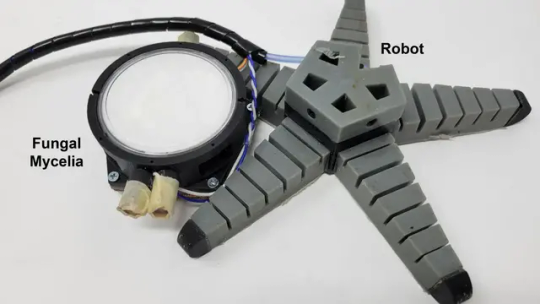
there is four actual elements that actually runs this bot besides of shell.
Fungus's Mycelium
Fungus's slug
UV light or UV array in the sun light
Electricity (it seperates as fungus related electrical pulse and electricity waves from censors)
firstly lets start with fungus mycelium: Mycelia are the underground vegetative part of mushrooms, and they have a number of advantages. They can grow in harsh conditions. They also have the ability to sense chemical and biological signals and respond to multiple inputs. so basically its neural system that transfers certain commands of activities between root and fungus itself
its slug is basically fungus's cell system or actual biohybrid organism it this case
once mycelium gets affected by UV lights it generates small electricity pulses to slug system and when slugs gets electrocuted by these pulses it acts like a muscle basically and it causes the slug to move or contract its muscles to activate.
and once you figure out how you gonna shape its muscle system and house them carefully you will have a "biohybrid robot" as their terms
the reason im taking this now is it reminded me "Fungus Baby Experiments" which is an inside name for series of projects that been continued for a while after corona until now.. Simply, the goal was to create or adapt an organism to thrive in different environments and make sure these environments livable by humans in the future by manipulating with artificial and external factors. Google it :)
anyways.. thats all from me this time..
until next time..
Sources:
for fungus baby experiments:
#tech#tech news#daily news#cyberpunk#future tech#scifi tech#research#rnd#r&d#labs#neuroscience#neurotech#fungus#fungus experiments#biohybrid bot#synthetic bot#synthetic robot#Youtube
45 notes
·
View notes
Note
Less of an ID here, but what are your thoughts on the AbramsX, both as a platform as whole, and what technologies from it do you think will show up on future upgrades to the Abrams?
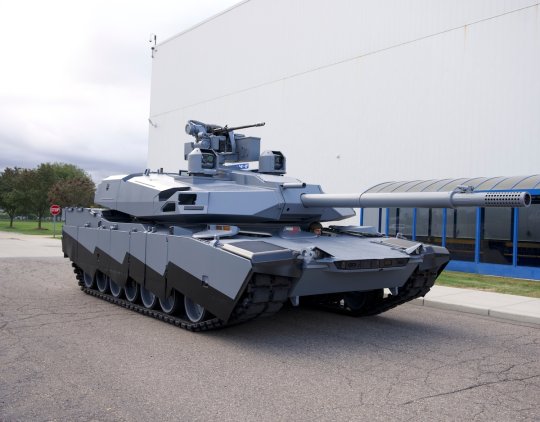
Oh boy, the Abrams X tech demo.
AKA: "Oh, so that's what the FCS program was for."
I have a lot of thoughts on the Abrams X, so, if you don't care to read all that, I'll leave a tl;dr at the bottom, in case someone wants to know my opinion without wanting to know why I have that opinion (for some reason.)
The Abrams X incorporates a lot of technology that excites me an awful lot. However, there are three things that stick out the most, so I'm gonna talk about them:
#1. The engine. The Abrams X uses a hybrid diesel engine (designed by Cadillac, if I remember correctly), which is a massive improvement over the current Abrams' gas turbine, which is less fuel efficient than just about every other MBT around. The new engine solves this problem by both switching to a hybrid design, which has greater performance, lesser noise, and lesser fuel consumption.
2. The turret/gun. It's remotely controlled, and miles better than the current m256, being lighter and even further integrated into optics/targeting. While I expect the real next-gen tanks to be equipping larger bore guns (in response to Russia and China looking to up-gun their next-gen MBTs), this Cannon is a fantastic intermediate step, and a great test bed/proof of concept for a remote-operated, auto-loading turret. This also drops the required crew down to 3, which may not seem like a big deal, but actually represents some pretty big stuff.
3. The integration. Ah, the "system of systems", come at last. Full integration to a combat network of drones, CAS fighters, other tanks, and in the future, perhaps fully autonomous ground vehicles. This is the thing that excites me most, as it means a truly massive level of integration and cooperation between every element of a combined arms forces, allowing every part to operate at a greater capacity. I've actually spoken with M1 tankers, and they seem most excited about the new Airplane-style helmets, and the level of coordination and targeting and spotting ability supplied by integrated drones.
However, it's not all sunshine and roses. With any massive leap forward in technology, this introduces a thousand thousand new potential points of failure into the system of every Abrams tank, which can cost lives when it counts. In addition, concerns have been expressed over the lowered crew count, saying that three people is not a reasonable number to expect to service and maintain a tank of the Abrams size out in the field, even with the supposed lower maintenance requirements of the Abrams X. Additionally, the smaller crew size and heavier focus on technology could indicate a shift in American tank ideology, towards the tanks being put out by other geopolitical powers, like China, Russia, and others.
So, to summarize, (here's that TL;DR I was talking about.) I think the Abrams is an incredibly promising test bed that is the culmination of the 1999-2009 Future Combat Systems program, and am excited to see how the technology will develop into the next generation of MBTs. However, I am cautious, as I can see several possible downsides to a lower crew size and a heavier reliance on tech.
33 notes
·
View notes